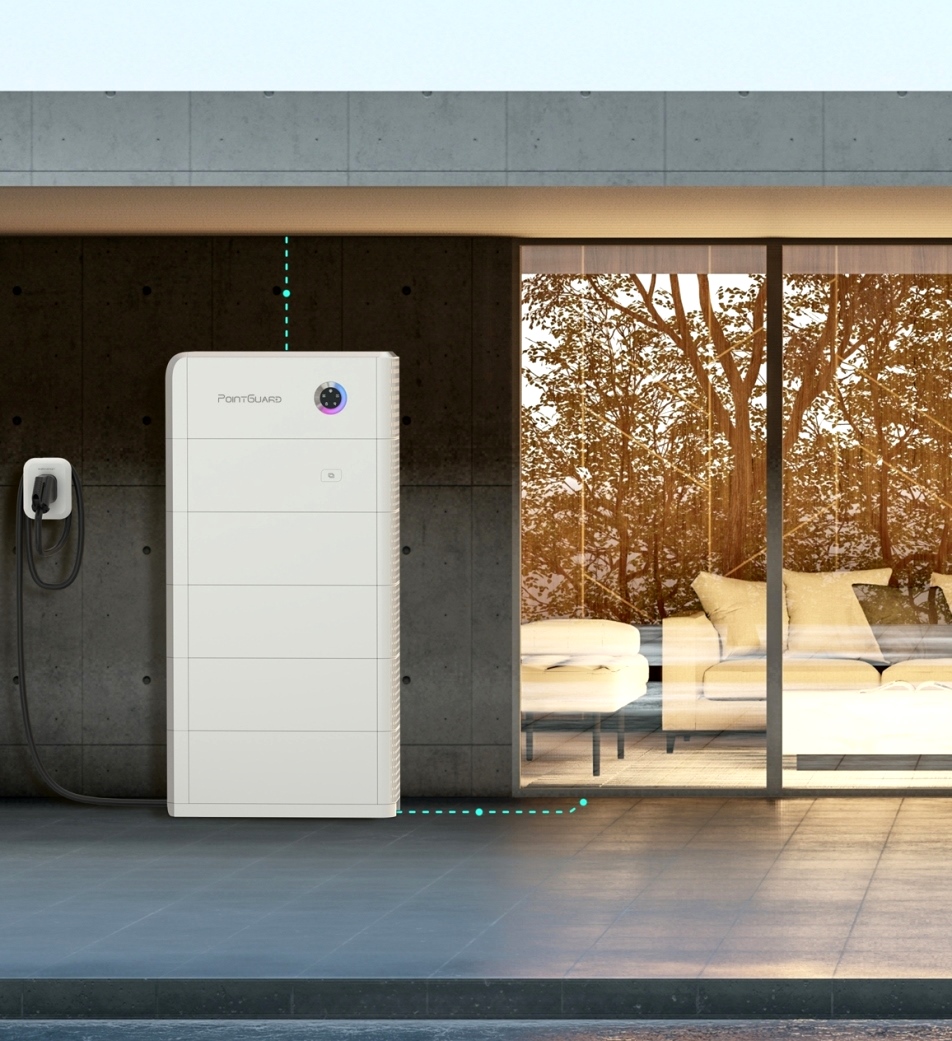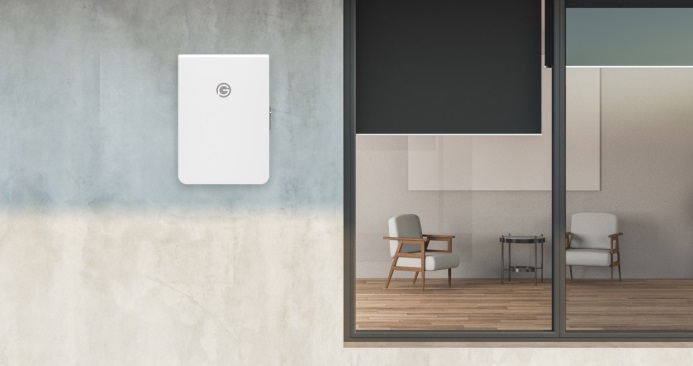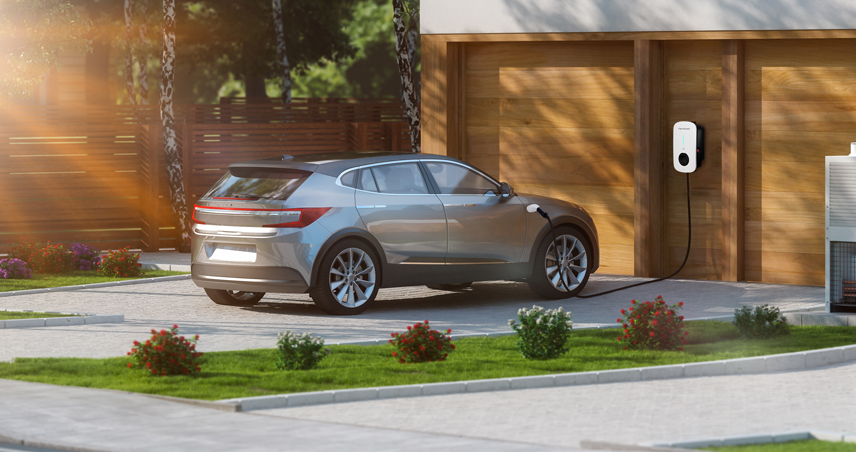PointGuard V2X Module
25 kW EV-Home Energy Bridge
PointGuard V2X Module
A genuinely future – proof product. It supports 25kW bi – directional charging, establishing itself as the central connection point between EVs and homes. Leveraging the advanced DC – coupled architecture, it allows EVs to be directly charged with solar – generated green electricity, thus facilitating eco – friendly mobility.
A genuinely future – proof product. It supports 25kW bi – directional charging, establishing itself as the central connection point between EVs and homes. Leveraging the advanced DC – coupled architecture, it allows EVs to be directly charged with solar – generated green electricity, thus facilitating eco – friendly mobility.
Bi-directional charging
The future is here.
Our advanced technology allows direct tapping into DC power from the battery and solar panel, enabling virtual grid capacity expansion and 100% green power charging. Get ready for the future with V2H (Vehicle-to-Home) and V2G (Vehicle-to-Grid) capabilities, unlocking limitless possibilities for modern living. *V2X functionality is limited by the EV’s capabilities. Once the relevant standards are
kW
The Most Diverse Charging Modes
The Most Diverse Charging Modes
Adaptable to All Your Charging Needs
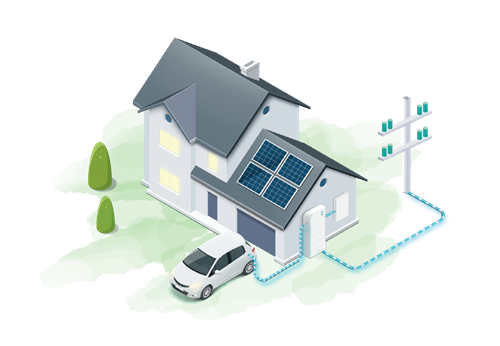
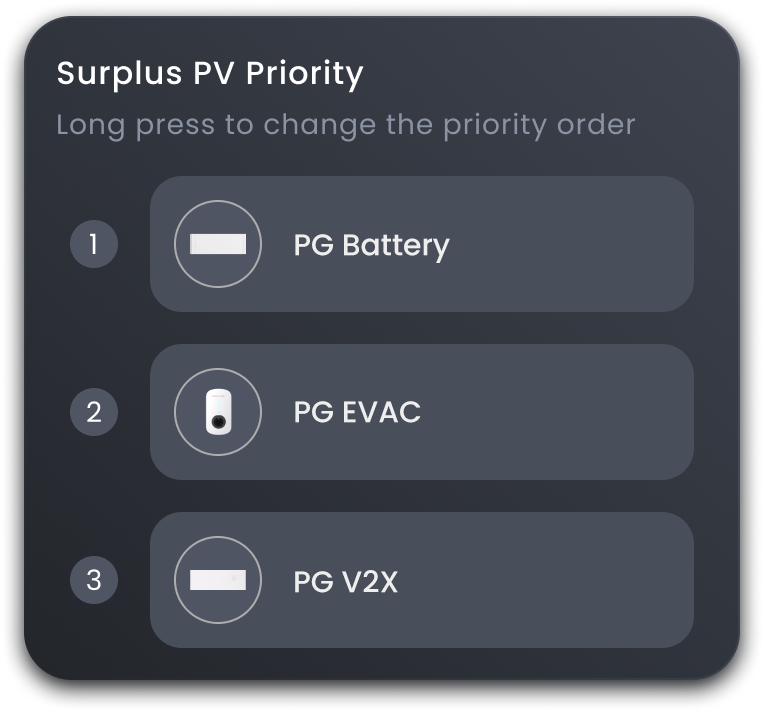
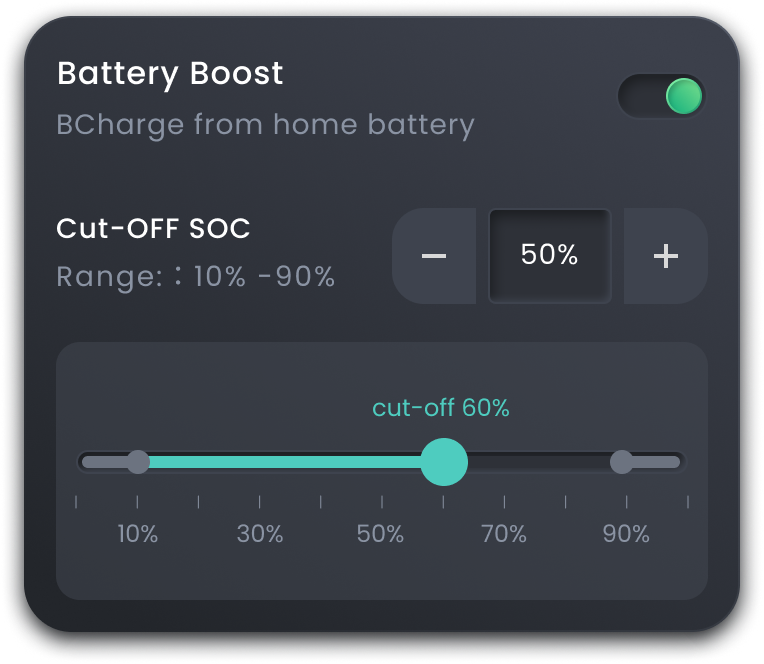
installation of PG V2X is as easy as stacking bricks.
EV-Home Energy Bridge
With PointGuard V2X Module, you can keep your home powered during outages, generate income by sharing energy with the grid, and charge your car using solar power.
Vehicle-to-home (V2H): Utilize EVs for Enhanced Home Backup Power, Coupled with PG BatteryPack for even more than 100kWh Storage Capacity.
Vehicle-to-grid (V2G): Allows the EV battery to share energy with the grid for peak shaving and load balancing.
- IP66 protection rating, no ingress of dust or water, no need for regular inspection and maintenance of vulnerable components.
- Elimination of the filter, no need to clean the dust screen.
- Proven isolation duct with optimized heat dissipation design, boosts long-time reliability.
V2X is Here
Tested and Compatible EV models as of date.
| Brand | EV models | Protocol Version | Test Date |
|---|---|---|---|
| Tesla | S Raven | DIN70121 | April, 2025 |
| Polstar | 4 | DIN70121 | April, 2025 |
| Volvo | C40 | DIN70121 | April, 2025 |
| Tesla | S P90D | DIN70121 | Mar, 2025 |
| MG | Marvel R Electric | DIN70121 | Mar, 2025 |
| BYD | Atto | DIN70121 | Mar, 2025 |
| Xpeng | G6 | DIN70121 | Mar, 2025 |
| BMW | iX xDrive40 | DIN70125 | Mar, 2025 |
| Fisker | Ocean | DIN70125 | Mar, 2025 |
| Mercedes-Benz | EQB 350 | DIN70125 | Feb, 2025 |
| Audi | A6 e-tron | DIN70125 | Feb, 2025 |
| Audi | Q4 | DIN70125 | Feb, 2025 |
| BMW | i3S | DIN70125 | Feb, 2025 |
| Tesla | Model 3 | DIN70125 | Feb, 2025 |
| Tesla | Model Y Performance | DIN70125 | Feb, 2025 |
| Tesla | Model Y Dual (NMC) 2022 | DIN70125 | Feb, 2025 |
| Tesla | Model Y SR (LFP) 2023 | DIN70125 | Feb, 2025 |
| Volvo | XC40 | DIN70125 | Feb, 2025 |
| Hyundai | Ionic 5 2022 | DIN70125 | Feb, 2025 |
| Citroën | eJumpy 2021 | DIN70125 | Feb, 2025 |
| Skoda | Enyaq 80x | DIN70125 | Feb, 2025 |
| Rivian | R1T | DIN70125 | Feb, 2025 |
| Ford | Lightning | ISO15118-2 | Feb, 2025 |
| Tesla | Model Y | DIN70121 | Nov, 2024 |
| Tesla | Model Y | ISO15118-2 | Nov, 2024 |
| Volvo | EX30 | DIN70121 | Nov, 2024 |
| KIA | EV6 | DIN70121 | Nov, 2024 |
| VW | ID.5 | ISO15118-2 | Nov, 2024 |
| Porsche | Taycan | ISO15118-2 | Dec, 2024 |
| Hyundai | Ioniq 5 | ISO15118-2 | Dec, 2024 |
| SAIC MAXUS | e Deliver 9 | DIN70121 | Dec, 2024 |
| NIO | ET7 | GBT27930-2015 | July, 2024 |
| NIO | ET5 | GBT27930-2015 | July, 2024 |
| NIO | ET5T | GBT27930-2015 | July, 2024 |
| NIO | ES8 | GBT27930-2015 | July, 2024 |
| NIO | ES6 | GBT27930-2015 | July, 2024 |
| NIO | EC7 | GBT27930-2015 | July, 2024 |
| NIO | EC6 | GBT27930-2015 | July, 2024 |
| NIO | ES7 | GBT27930-2015 | July, 2024 |
| NIO | ET9 | GBT27930-2015 | July, 2024 |
* The data/information presented is based solely on actual test results. Whether it can be applied in practice depends on the capability and readiness of automotive manufacturers to enable the relevant functions in their commercially available vehicles. If other automotive companies or users are interested in experiencing and testing V2X technology, please feel free to contact sales team or service team for guidance and feedback. We sincerely welcome industry peers to collaborate in advancing and validating V2X technology, driving its maturity, fostering technological innovation, and benefiting society.
The discharging feature of the PointGuard V2X module is based on the communication interface between the V2X module and the EV.Currently, this communication interface follows the ISO 15118-2 and DIN 70121 protocolls, which are not an offically recognized communication protocolls. Please note that the safety aspects have not been fully verified for routine daily use by end users. Please also note that PointGuard assumes no liability regarding the warranty of the electric vehicle being discharged or damage resulting from the use of this V2X test version. The development of the official and industry compliant communications protocoll for PointGuard’s V2X feature in accordance with ISO 15118-20 is ongoing. For more information or support for the V2X module, please contact the PointGuard team at sales@pointguardenergy.com(Sales) or service@pointguardenergy.com(Service).

DC Outlet
Max. charging power(kW) 25
Output voltage range(V) 150~1000
Charging interface CCS1 / NACS
Function
Authentication RFID card / App / no authentication
General
Cooling Smart air cooling
Ingress protection rating IP66

